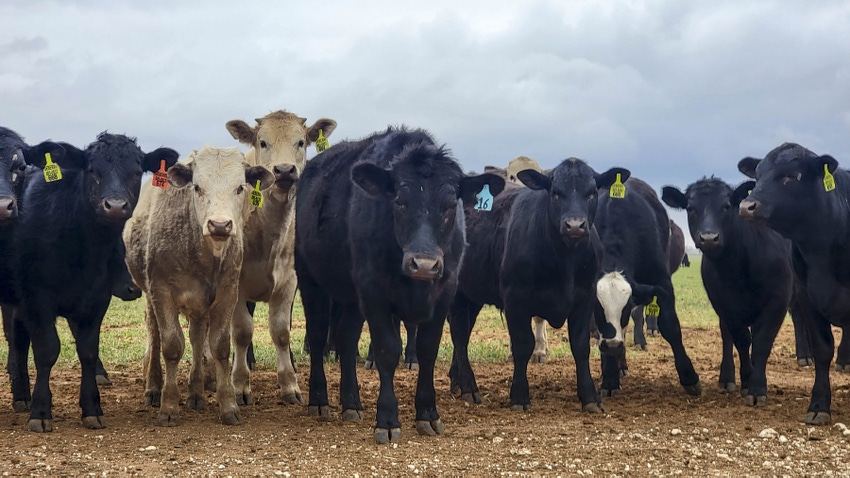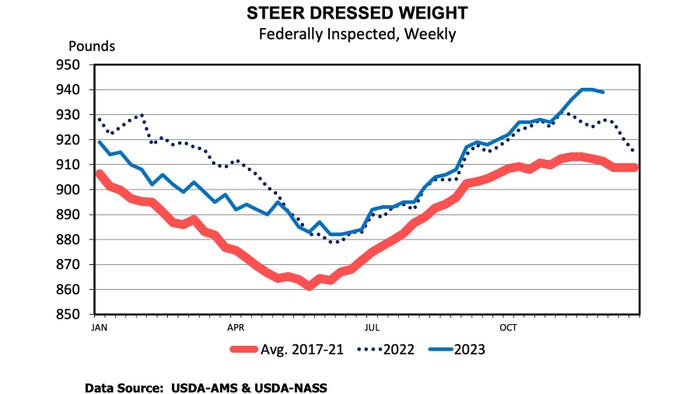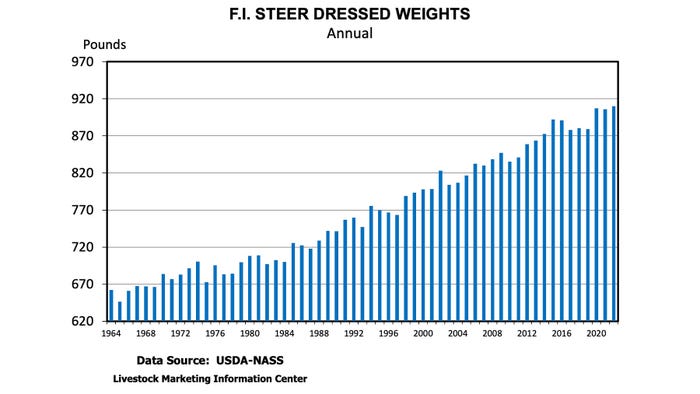
The title of this article is not meant to incite regret over our holiday excesses but, instead, to take a look at cattle-dressed weights in late 2023 that set new record highs. Heavier weights contributed to more beef production than expected, helping to pressure prices late in the year.
Fed cattle weights have a distinct seasonal pattern through the year. They usually hit their seasonal lows in May-June and their highs late in the year. Days on feed, placement weights, weather, and prices all effect dressed weights. Dressed weights were below 2022 until early May contributing to some tighter beef supplies. Steer-dressed weights climbed seasonally, about equal to the year before, until late in the year when they climbed to a record 940 pounds. The increase in steer-dressed weights contributed an additional more than 3 million pounds of beef per week in November and December.

Record high dressed weights should not be a surprise to long-term participants in the cattle market. The steady growth in weights over time has been one of the remarkable achievements in productivity growth of the industry. In 1964, steer-dressed weights averaged 662 pounds per head. In 2023, steer-dressed weights were an estimated 907 pounds per head. Weights in 2022 hit an annual record high of 910 pounds. The three-pound annual decline in 2023 is largely due to lower weights in early 2023. Bigger cattle, feeding efficiency gains, and economics have driven this long-term trend of heavier weights.

What’s to come in 2024? We should expect the seasonal pattern to continue. But, the seasonal pattern will be impacted by days on feed. We entered December 2023 with more cattle on feed over 120 days than the year before, likely meaning some heavier weights are ahead at least early in the year. Lower feed costs than the year before imply some heavier weights. Winter weather will be important in the coming months. A series of severe storms would pull down weights. Beef demand will be a major factor in weights. A boost in consumer demand resulting in higher cutout values, boosting margins, and fed cattle prices would speed up fed cattle marketings and pull down weights. Fed cattle weights will be something interesting to watch in the coming year.
Happy New Year!
Source: Southern Ag Today, a collaboration of economists from 13 Southern universities.
Read more about:
BeefAbout the Author(s)
You May Also Like




